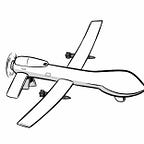America Dropped Deadly Barrel Bombs in Vietnam
U.S. Army and Air Force deployed devastating munitions decades before Syria did
Helicopter-dropped barrel bombs have become a bloody hallmark of the Syrian civil war, but the idea has been around for at least 45 years. The U.S. used the tactic decades ago in Vietnam.
Of course, Vietnam and Syria are very different wars. Bashar Al Assad’s military uses the explosive drums to terrorize civilians. War is Boring’s own David Axe witnessed barrel-bombings in northern Syria last fall.
In Vietnam, the American plan was to smoke out guerrillas.
The Viet Cong knew their homeland and were masters of camouflage. The U.S. military tried everything it could think of to take away these advantages.
One idea was to burn away the foliage insurgents hid in. Dropping barrels of fuel oil from helicopters and planes was one way to do this.
Army crews kicked the incendiary drums out of Chinook helicopters onto suspected enemy camps. They strapped white phosphorus smoke grenades to the cylinders to set them alight.
The Air Force took the concept one step further and tried to start raging forest fires in Viet Cong base areas. The flying branch used fire barrels as well as normal incendiary bombs.
In April 1968, C-130s dropped more than 200 drums of fuel oil into the U Minh Forest during Operation Inferno. Again, white phosphorus-filled rockets and grenades set the liquid ablaze.
The only problem was that a lot of the forest is actually a swamp and is underwater at high tide. The fires went out quickly after the oil burned off.
The Air Force tried and failed again to set U Minh on fire the following July. In 1970, the whole forest fire project came to an end.
In addition to the fire-starting, the Army also used helicopters to drop drums full of the chemical CS. The agent produces what is commonly called “tear gas” when it is burned.
The raw CS powder is also very irritating if you inhale it or get it on your skin. American troops would flush enemy fighters out of tunnels, bunkers, and other areas with the stuff.
Chinooks carrying dozens of barrels full of CS could saturate entire areas. The powder could make camps inhospitable and contaminate stockpiled food.
Initially, the barrels were set off with small improvised explosive charges. Eventually the ground branch designed a special fuze to burst open the 55-gallon drums.
The Pentagon eventually started using actual cluster bombs filled with CS bomblets. In the end, the military removed the weapons from its arsenal after Pres. Gerald Ford renounced the first use of so-called “riot control agents” in war in 1975.
America no longer barrel-bombs and, by comparison, the Syrian campaign looks decidedly amateurish—driven by desperation and shrinking resources.
You can follow Joe Trevithick on Twitter at @FranticGoat. Sign up for a daily War is Boring email update here. Subscribe to WIB’s RSS feed here and follow the main page here.
